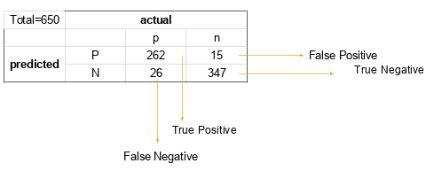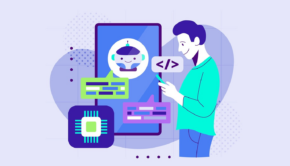Top 40 NLP Interview questions for Data Science
Natural Language Processing or NLP enables machines understand and analyse the natural languages. If you are a Data Scientist planning to appear for an interview, it would be helpful for you to know the important top 40 NLP interview questions that might be asked during the technical interview. Make sure you go through each of questions for a more structured preparation.
Part-A
- Distinguish between machine level language and data analysis.
Answer: Machine learning is based on strong coding and the fundamentals of statistics and business applications. Data analysis is based on an analysis of statistics.
- What role does big data play?
Answer: Big data plays the role of volume velocity, inflow rate of data and types of data.
- While pursuing data science, what are the four main fundamental topics?
Answer: The four main things involved in data science includes descriptive statistics, hypothesis analysis, and testing, inferential statistics and normal distribution as well as the sampling distribution.
- Define inferential statistics and descriptive statistics.
Answer: Inferential statistics is the mode of conclusion about the population count based on information that is provided. Descriptive statistics provide exact and specific information.
- Write 5 differences each, without repeating any difference twice in between inferential and descriptive statistics.
Answer: From inferential statistics, we just get a probable idea on the statistical count whereas descriptive statistics provide a perfect and exact count of the population. The inferential statistics at times turn out to be ineffective due to computational cost, whereas descriptive statistics play a better role in providing a conclusion.
- What is the fundamental application of descriptive statistics in data science?
Answer: Data properties are described by using descriptive statistical analysis.
- Write a descriptive implementation of data science in improving aviation technology. Support your answer with arithmetical calculations.
Answer: To calculate the mean median and mode. This is the fundamentals of aviation and radar technology.
Mean= summation of all possible observations/ total number of observations.
- Define range, interquartile ranging, standard deviation and variance concerning spreading.
Answer: Range= Max- Min; Interquartile range= Q3-Q1; Variance= (Standard deviation) to the power two.
- What is the basic difference between left-skewed and right-skewed?
Answer: the basic difference between left and right screw is the variation in alignments.
- What is quantitative data? Support your answer with an example and show the implementation of quantitative data support in the field of data science.
Answer: Numeric data is referred to as quantitative data.
- What is the difference between the interquartile range and ranging?
Answer: IQR= third quartile – first quartile.
- What are the essential criteria for the 5-number summary?
Answer: Lower extreme, medium, upper extreme, and upper quartile.
- Show the fundamental application and implementation of using box pilot? Provide a substantial example.
Answer: Box plot shows a 5 number pictorial summary.
- How can you state the application of computer programming in the field of data science?
Answer: Computer programming is the backbone of data science.
- Which is the best mode of programming suitable for enhancement of data science application?
Answer: Application of Blue J, C, and C++ along with python. In this regard, Python is an essential coding language that is required to enhance programming help. Python is also encrypted with privacy coding and it helps a developer to clean, massage and organized an unstructured enterprise of data.
- What are the fundamental aspects to protect all kinds of data science software?
Answer: Piracy of data is the biggest form of crime in data science. Hackers have got many VPN tracking software that can breach any system. Manipulation of big and raw data can damage the entire system.
- What do you mean by symmetric mean distribution theorem?
Answer: Mean distribution theorem includes binomial, uniform and normal distribution.
- What is the curve distribution method? How do you think that the curve distribution method is different from the Gaussian distribution method? State the implementation aspect of the curve distribution method and the Gaussian distribution method in the field of data science application module.
Answer: Normal distribution is a bell-curved graphical mode is called curve distribution. Gaussian distribution is a process that gives an exact calculation of events that occur in a binomial distribution probability segment.
- State the process that is involved changing the standard normal distribution method to the normal distribution method? What is the origin of a standardized formula? Derive the equation along with a substantial logic answer method.
Answer: The combination of 0 for standard distribution and 1 standard deviation is the initial way of conversion.
- What are the fundamental aspects that create differences between sample statistics and the population of parameters?
Answer: Sample statistics are essential for Mean and standard deviation. A population parameter is an unknown value for sample statistics which is a derivation process. This also includes advanced statistics and hypothesis testing.
21. What is the main difference between supervised learning and unsupervised learning?
Answer:
| supervised learning | unsupervised learning |
|
|
22. What is Big Data?
Answer: Big Data is an extremely large data set which can be treated computationally to reduce the excess load.
23. What are the key benefits of Big Data?
Answer: Big Data can reduce the extra cost. It increases your efficiency
24. How can you deal with logistic regression?
Answer: Logistic Regression can Measure the relation between independent variables and dependent variables.
25. Define the Random Forest Model.
Answer: Random Forest model built up several decision trees. It also deals with different groups of individual data.
26. What is the concept of Selection Bias?
Answer: It is a chaotic situation that introduced a non- random population system.
27. Define the term Confusion Matrix.
Answer: 
Accuracy = (True Positive + True Negative) / Total Observations
= (262 + 347) / 650
= 609 / 650
= 0.93
As a result, accuracy is 93 percent.
28. How should you maintain and deal with a deployed model?
Answer:
1. Constant Monitoring
2. Evaluate the metrics of the current model then determine the new algorithm which one is needed
3. Compare the new models with each other and determine the performance level.
4. Re-built the current state of required data
29. Define the term ‘recommender system’?
Answer: Recommender system is a specific prediction tool that determines what specific rate is provided by the user.
30. What is the significance and importance of p-value?
Answer: p-value typically ≤ 0.05
It indicates the strongest evidence against any type of null hypothesis.
p-value typically > 0.05
It defines the weaker evidence against the null hypothesis
p-value at cutoff 0.05
It considers the marginal way.
31. Write basic SQL queries that enlist all orders with different customers’ information.
Answer: It needs to consider different types of Data such as
Select the Order number, First and last name, Total Number, City, Town
From order
Join the customer
Customer ID verification
32. Between Python and R – which one is the best for text analytics?
Ans The main difference between Python and R are defined as a mathematical term
plot1 = [1,3]
plot2 = [2,5]
Part-B
Apart from these valuable questions you can also be asked several questions from the following:-
33. Which technique usually used for categorical response prediction?
34. Do you think Data cleaning plays an important role in the field of analysis?
35. Give the basic difference between Confidential Interval and Point estimates?
36. What is the main goal of A/B Testing?
37. What is the term ‘exploding gradients’ refers?
38. What are the different functions of SVM?
39. Define Box-Cox Transformation.
40. What is Normal Distribution?
Take advantage of the resources available at Great Learning for the interview preparation and impress the panel for that job.















